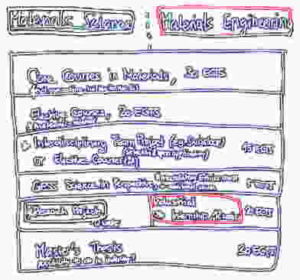In the introductory project management course that we took at the start of our curriculum revision process, we learned about the importance of defining the boundaries of a project, and not succumbing to the ever-present temptation of project inflation. Up until now, we have managed to be quite disciplined and have repeatedly restrained ourselves from drifting into modifying our Master’s program. We resolved that revision of the MS degree will be a separate project that should wait until the BS revision is completed.
The purpose of this blog is to share with you a spectacular failure.
Last month, Sara, Andrea, Markus and myself from our project team, as well as another DMATL colleague, Prof. Peter Walde, joined the staff of the Rektorat, the Educational Development and Technology Group, and the other Studies Directors and Coordinators at a teaching retreat in beautiful Emmetten overlooking the spectacular Vierwaldstättersee. The topic of the retreat was master studies, and we expected to enjoy some philosophical discussions about what constitutes a good MS program in anticipation of the hard work we would start doing on ours in a couple of years’ time. Indeed. we heard a particularly interesting plenary talk from Prof. Dr. Pierre Vandergheynst, the Dean of Education at our sister school in Lausanne, who piqued our interest in introducing minor specialities during the masters studies, had break out discussions on the admissions process and program structure, and spent some social time getting to know motivated and enthusiastic new colleagues.
The last session was a Department discussion, and due to a shortage of conference rooms, the DMATL team was located in the hotel fitness center. Since, as you might remember, we have been addressing the question of whether to move our Industrial Internship from the bachelor to the master, we decided to focus on the structural impact that such a move would have on our MS curriculum. Our first task, though, was to try to switch off the rather loud piped workout music; while I have to confess to being a closet ABBA fan, their Greatest Hits would not have been my first choice of background music for serious curriculum discussions. After only managing to find switches that either plunged us into darkness, or activated the jets on the whirlpool, however, we instead embraced the foot-tapping and got down to work. Half an hour later (somewhere around “If you change your mind…”) we realized that our flip chart contained, seemingly by accident, an elegant new dual-track MS degree structure, which could alleviate some of our existing structural inconsistencies and allow us to implement an improved program rather efficiently.
Now of course it is rather easier to agree on a new curriculum structure with five colleagues than with an entire Department. But maybe allowing ourselves a little bit of flexibility to continue the MS discussion out of our agreed-on sequence will not be such a diversion after all. Particularly with our secret source of inspiration.

